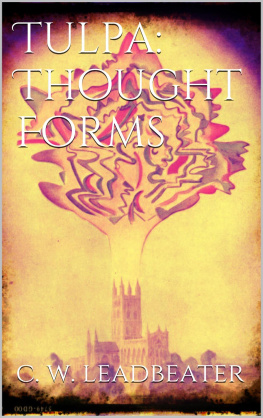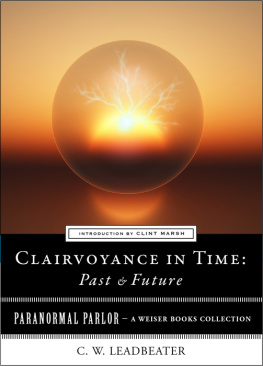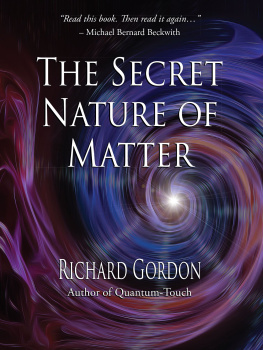Tulpa: Thought-Forms
Preface
The history of western magic started about 4000 years ago. Andsince then it has been adding something to western magic.Originally, the Latin word magus nominated the followers of thespiritualist-priest class, and later originated to electclairvoyant, sorcerer and in a judgmental sense also magician,trickster. Thus, the initial meaning of the word magic was thewisdoms of the Magi, that is the abilities of attainingsupernatural powers and energy, while later it became practicalcritically to deceitful wizardry. The etymological descriptionsspecify three significant features in the expansion of the notionmagic: 1) Magic as a discipline of celestial natural forces andin the course of formation 2) Magic as the exercise of such factsin divinations, visions and illusion 3) Fraudulent witchery. Thelatter belief played a significant part in the Christiandemonization process. The growth of the western notion magicdirected to extensive assumptions in the demonological andastrophysical argument of the Neoplatonists. Their tactic wasgrounded on the philosophy of a hierarchically ordered outer space,where conferring to Plotinus (C205C270 AD) a noetic ingredient wasshaped as the outcome of eternal and countless radiation built onthe ultimate opinion; this in its chance contributed to the rise ofpsychic constituent, which formed the basis of the factual world.Furthermore, these diverse phases of release came to be measured asconvinced forces, which underneath the impact of innocent and evilviews during late ancient times were embodied as humans. Thehierarchical cosmos of Iamblichus simply demonstrates thelegitimacy of this process. In his work, the Neoplatonic cosmologyhas initiated a channel through the syncretism distinctive of thelate antiquity and in the essence of Greco-Oriental dualism.Superior productions are taken closer to inferior ones by variousmidway creatures. The higher the site of the mediators, the furtherthey bear a resemblance to gods and whizzes; the minor they are,the nearer they stand to the psychic-spiritual part. Theaforementioned group of intermediaries has been settled in order ofseries on the origin of cosmic gravity. Proclus (c410485 AD) hasdescribed the system of magic origin conversed above in betteraspect: in the hierarchical shackles of cosmic rudiments the powerand nature of a firm star god disturbs everything mediocre, andwith growing distance the impact slowly becomes weaker. TheHumanists approached the Platonic notions from the outlook of thebequest of late antiquity, and were thus first familiarized to theNeoplatonic form of the doctrine. And since Ficinos work has beeninscribed in the spirit of emanation theory, and the author hasbeen persuaded of the existence of the higher and lower spheres ofmagic and powers defined in Picatrix, he claims that planets andcosmic movements have much to do with power and magic spirit.Todays occult marketplace also offers, in addition to books,multifarious paraphernalia for practicing magic: amulets,talismans, pendulums and magic rods. Though added with modernessentials and pseudoscientific advices to give some weight to thefundamentals, they are nothing but the leftovers of the westernethnicities of magic.
THOUGHT-FORMS
As knowledge increases, the attitude of science towards thethings of the invisible world is undergoing considerablemodification. Its attention is no longer directed solely to theearth with all its variety of objects, or to the physical worldsaround it; but it finds itself compelled to glance further afield,and to construct hypotheses as to the nature of the matter andforce which lie in the regions beyond the ken of its instruments.Ether is now comfortably settled in the scientific kingdom,becoming almost more than a hypothesis. Mesmerism, under its newname of hypnotism, is no longer an outcast. Reichenbach'sexperiments are still looked at askance, but are not whollycondemned. Rntgen's rays have rearranged some of the older ideasof matter, while radium has revolutionised them, and is leadingscience beyond the borderland of ether into the astral world. Theboundaries between animate and inanimate matter are broken down.Magnets are found to be possessed of almost uncanny powers,transferring certain forms of disease in a way not yetsatisfactorily explained. Telepathy, clairvoyance, movement withoutcontact, though not yet admitted to the scientific table, areapproaching the Cinderella-stage. The fact is that science haspressed its researches so far, has used such rare ingenuity in itsquestionings of nature, has shown such tireless patience in itsinvestigations, that it is receiving the reward of those who seek,and forces and beings of the next higher plane of nature arebeginning to show themselves on the outer edge of the physicalfield. "Nature makes no leaps," and as the physicist nears theconfines of his kingdom he finds himself bewildered by touches andgleams from another realm which interpenetrates his own. He findshimself compelled to speculate on invisible presences, if only tofind a rational explanation for undoubted physical phenomena, andinsensibly he slips over the boundary, and is, although he does notyet realise it, contacting the astral plane.
One of the most interesting of the highroads from thephysical to the astral is that of the study of thought. The Westernscientist, commencing in the anatomy and physiology of the brain,endeavours to make these the basis for "a sound psychology." Hepasses then into the region of dreams, illusions, hallucinations;and as soon as he endeavours to elaborate an experimental sciencewhich shall classify and arrange these, he inevitably plunges intothe astral plane. Dr Baraduc of Paris has nearly crossed thebarrier, and is well on the way towards photographing astro-mentalimages, to obtaining pictures of what from the materialisticstandpoint would be the results of vibrations in the grey matter ofthe brain.
It has long been known to those who have given attention tothe question that impressions were produced by the reflection ofthe ultra-violet rays from objects not visible by the rays of theordinary spectrum. Clairvoyants were occasionally justified by theappearance on sensitive photographic plates of figures seen anddescribed by them as present with the sitter, though invisible tophysical sight. It is not possible for an unbiassed judgment toreject in toto the evidence ofsuch occurrences proffered by men of integrity on the strength oftheir own experiments, oftentimes repeated. And now we haveinvestigators who turn their attention to the obtaining of imagesof subtle forms, inventing methods specially designed with the viewof reproducing them. Among these, Dr Baraduc seems to have been themost successful, and he has published a volume dealing with hisinvestigations and containing reproductions of the photographs hehas obtained. Dr Baraduc states that he is investigating the subtleforces by which the souldefined as the intelligence workingbetween the body and the spiritexpresses itself, by seeking torecord its movements by means of a needle, its "luminous" butinvisible vibrations by impressions on sensitive plates. He shutsout by non-conductors electricity and heat. We can pass over hisexperiments in Biometry (measurement of life by movements), andglance at those in Iconographythe impressions of invisible waves,regarded by him as of the nature of light, in which the soul drawsits own image. A number of these photographs represent etheric andmagnetic results of physical phenomena, and these again we may passover as not bearing on our special subject, interesting as they arein themselves. Dr Baraduc obtained various impressions by stronglythinking of an object, the effect produced by the thought-formappearing on a sensitive plate; thus he tried to project a portraitof a lady (then dead) whom he had known, and produced an impressiondue to his thought of a drawing he had made of her on her deathbed.He quite rightly says that the creation of an object is the passingout of an image from the mind and its subsequent materialisation,and he seeks the chemical effect caused on silver salts by thisthought-created picture. One striking illustration is that of aforce raying outwards, the projection of an earnest prayer. Anotherprayer is seen producing forms like the fronds of a fern, anotherlike rain pouring upwards, if the phrase may be permitted. Arippled oblong mass is projected by three persons thinking of theirunity in affection. A young boy sorrowing over and caressing a deadbird is surrounded by a flood of curved interwoven threads ofemotional disturbance. A strong vortex is formed by a feeling ofdeep sadness. Looking at this most interesting and suggestiveseries, it is clear that in these pictures that which is obtainedis not the thought-image, but the effect caused in etheric matterby its vibrations, and it is necessary to clairvoyantly see thethought in order to understand the results produced. In fact, theillustrations are instructive for what they do not show directly,as well as for the images that appear.












